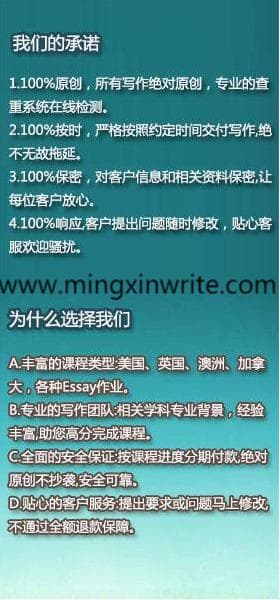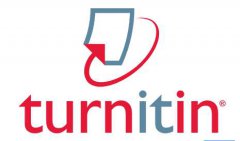发布时间:2020-12-11 热度:
学生首选英文作业代写品牌,essay、paper代写,微生物学,动物学,解剖论,植物学,生态学、遗传学、分子生物学、病毒学、古生物学、进化论代写英文
Anthropology 005
Problem Set # 5
Altruism, heritability, male homosexuality, and monophyly
Fall 2018
1. Alleles that (sometimes) lower the fitness of their bearers can nevertheless spread in the population.
A. What is the difference between the way a kin-selected allele spreads and a reciprocally altruistic allele spreads?
Kinship selection, this change is due to the action and interaction between individuals whose relatives share alleles. Reciprocal altruism and kin selection are almost the same but emphasize reciprocity rather than genetic correlation. Therefore, the characteristics of reciprocal altruism can be disseminated.
B. Based on what you learned in Chapter 11, is Xq28 a kin-selected altruistic allele? Explain why or why not.
Yes, Because he sacrificed himself to ensure the integrity of human genes.

2. Remember that heritability (h2) = Vg / (Vg + Ve).
A. In words, what is heritability?
Heritability refers to the ratio of genotype variance (VG) to total phenotype variance (Vp), which is a genetic statistic to measure the relative degree of genotype variation and total phenotype variation.
B. Environmentality (e2) is the mathematical complement of heritability, that is:
e2 = 1-h2 = [Ve / (Vg + Ve)]. So, in words, what is environmentality?
Environment is relative to heritability. It refers to the change of a character which is affected by the environment
C. Let’s think about a “pair-bonding” locus (pair-bonding is the tendency for a female and male to stay together after they copulate). Assume that this locus currently has two alleles, j and k, and that this is the only locus that carries alleles that affect pair bonding (almost certainly an oversimplification, but this is a thought experiment to help you understand heritability). Assume codominance at this locus and that, on average, the j allele is associated with stronger pair bonding. In this example is pair-bonding heritable? Explain.
Yes, because alleles are co-dominant and their expression opportunities are equal, people with J allele can form better combinations than those with K allele, so the number of individuals with J allele increases.
D. In a population where pair bonding is favored by selection the frequency of the k allele will eventually be zero. What will the genetic variance (Vg) of pair bonding be at that point? Explain.
The genetic variation will be reduced, because only one allele can be selected now, eliminating all the variation.
E. What will the heritability (h2) of pair-bonding be at that point? Explain.
According to the formula, H2= VG/ (VG+VE) is VE=0, so H2= VG/ (VG+VE) = VG/VG=1. Therefore, under equilibrium conditions, the heritability of bond pairs is 1.
F. At that point would it be correct to say that people do not inherit their pair-bonding tendencies? Explain.
No Because VE is zero and the environment has no effect, people will only inherit their pairing tendency and will not be affected by the environment.
G. Why do we have to assess the heritability of male homosexuality before considering whether this trait needs an evolutionary explanation?
Because gays and lesbians do not have genetic characteristics, their collections do not produce offspring, so they do not have heritability.
3. Most evolutionists use cladistic methods of constructing natural groups.
A. What does the pattern of lines on a cladogram (see next page) supposedly represent?
The pattern of the branching diagram represents the process of evolution, from which we can also see the distance between a species and a species, as well as the sequence and process of evolution.
B. Explain how a cladogram is like the diagrams used to depict family genealogies.
It's like a genealogy because from it you can see the relationships and connections between different parts, the order, and relationship of each species.
C. Cladistics relies on the principle of monophyly. What are the features of a monophyletic group?
A monophyletic group, which includes common ancestors and their descendants, is an organism distinct from any other group and has close relationships than any other member of the group.
D. In the top cladogam on the next page, is Pongidae a monophyletic group? Why?
No, all the branches of the monophyletic group belong to this monophyletic population.
E. In the bottom diagram is Pongidae a monophyletic group? Why?
Yes, Because they are classified according to the same genetic characteristics, and this classification is reasonable, its branches are accurate.
F. Which (if either) diagram is cladistically more defensible? Why?
The bottom one is cladistically more defensible. Because humans should not be alone in their own communities, but should be included in the family.






